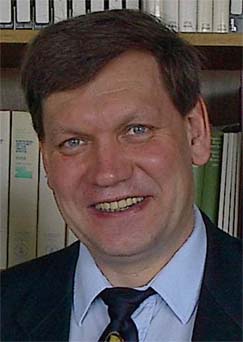Longevity Lecture in Halifax
Greetings,
We are pleased to announce our upcoming invited lecture on Human Longevity Studies to be held on Thursday, May 3, at the Division of Geriatric Medicine, Dalhousie University, Halifax, Canada (5:00pm – 6:00pm, Room 1613A at Veterans’ Memorial Building - VMB Building, 5955 Veterans’ Memorial Lane):
Determinants of Exceptional Longevity
by Leonid Gavrilov, Ph.D. and Natalia Gavrilova, Ph.D.
Center on Aging, NORC/University of Chicago, Chicago, USA
This lecture will present new findings from the ongoing study of American centenarians, a study supported by the US National Institute on Aging, NIH, and by the Society of Actuaries.
The presentation will describe where to get the data on long-lived individuals, how to validate these data, and how to use them in order to find out the determinants of exceptional human longevity.
The lecture will also discuss new findings on the effects of birth order, maternal-age at person's birth, and young-adult-age obesity on chances of exceptional survival.
-------------------------------
Relevant Publications and Additional Reading:
Gavrilova N.S., Gavrilov L.A. Search for Predictors of Exceptional Human Longevity: Using Computerized Genealogies and Internet Resources for Human Longevity Studies. North American Actuarial Journal, 2007, 11(1): 49-67.
Gavrilov L.A., Gavrilova N.S. Childhood Conditions and Exceptional Longevity. Full paper presented at the Annual Meeting of the Population Association of America, Los Angeles, CA, April 1, 2006, 35 pages. Published online at: http://paa2006.princeton.edu/download.aspx?submissionId=61675
Gavrilova, N.S., Gavrilov, L.A. Living to 100 and Beyond: Search for Predictors of Exceptional Human Longevity. Final report published online by the Society of Actuaries, Schaumburg, Illinois, USA, 2005, 81 pages.
Gavrilova, N.S., Gavrilov, L.A. Search for Predictors of Exceptional Human Longevity. In: “ Living to 100 and Beyond” Monograph. The Society of Actuaries, Schaumburg, Illinois, USA, 2005, pp. 1-49.
Gavrilov, L.A., Gavrilova, N.S. Mortality of centenarians: A study based on the Social Security Administration Death Master File. Full Paper presented at the Annual Meeting of the Population Association of America (Philadelphia, March 31 - April 2, 2005, oral presentation), 31 pages.Abstract published in: Population Association of America 2005 Annual Meeting. Final Program and Abstracts. p. 183.
Gavrilova, N.S., Gavrilov, L.A. 2005. Search for Predictors of Exceptional Human Longevity: Using Computerized Genealogies and Internet Resources for Human Longevity Studies. Published online at: http://ce.soa.org/living-to-100/3b_papers.pdf. Full Paper presented at the Living to 100 and Beyond International Symposium sponsored by the Society of Actuaries (Orlando, Florida on January 12-14, 2005, oral presentation).
-------------------
Media Coverage:
" How to live long and prosper"
New Scientist, issue 2579, November 25, 2006, page 19
"Secret of a long life revealed"
The Sun, UK - November 23, 2006
" First-born of young mums likely to live longer"
Daily Mail, UK - - November 22, 2006
" First-born of young mums likely to live longer"
This is London, UK - - November 22, 2006
" Thanks, mom! Want to live to 100? Having a young mother helps"
Chicago Sun-Times, United States - Wednesday, November 22, 2006
" Living to Be 100 May Depend on Mom"
Forbes -- Monday, November 20, 2006
" Living to Be 100 May Depend on Mom"
CBC News, Canada -- Monday, November 20, 2006
"Young moms, long life?"
Newsday, NY, USA -- Monday, November 20, 2006
" If your mother was under 25 when she had you, you may live to be 100"
Daily Telegraph, UK -- Saturday, November 18, 2006
" Babies of younger mothers have twice the chance of living to 100"
Daily Mail -- June 26, 2006
"Key to long life may be mom's age at birth"
ABC News -- June 23, 2006
"Key to long life may be mom's age at birth"
MSNBC -- June 23, 2006
"Key to long life may be mom's age at birth"
Reuters -- June 23, 2006
" New Research Suggests Children Born to Young Women Are More Likely to Live to 100"
Society of Actuaries Press Release -- 14 June 2006
" Living to 100 may depend on your mother"
Medill News Service, Northwestern University -- May 31, 2006
" Children of younger moms see benefits"
Chicago Maroon, IL - May 26, 2006; pdf file
" Making a century. 60 Seconds"
New Scientist magazine -- 22 April, 2006, issue 2548, page 7.
" Mom's age mean longer life?"
Chicago Tribune -- April 25, 2006
"A Baby Boon"
Forbes, -- Monday, Apr 17, 2006
" Younger Moms' Kids Get Longevity Edge"
Medline Plus -- Monday, April 17, 2006.
A service of the U.S. National Library of Medicine and the National Institutes of Health
" Younger Moms' Kids Get Longevity Edge"
Health Finder -- Monday, April 17, 2006.
A Service of the National Health Information Center, U.S. Department of Health & Human Services
" Younger Moms' Kids Get Longevity Edge"
WomensHealth.gov -- Monday, April 17 2006.
National Women's Health Information Center, U.S. Department of Human Health and Human Services
" Investigations: Fig. 1, Birthright"
The University of Chicago Magazine, -- February 2006, volume 98, issue 3, page 20
"SOA: Society of Actuaries: First-Born Daughters More Likely to Live to 100,
Suggests Society of Actuaries Research"
Webbolt Business News, Canada - Jan 5, 2006
-------
We could be reached in Halifax, Canada on May 2 - 6 at:
Residence Inn – Marriott
1599 Grafton Street, Halifax, Nova Scotia B3J 2C3
Phone: 422-0493 Fax: 422-0413
http://marriott.com/hotels/travel/yhzri-residence-inn-halifax-downtown
------
Home:
Longevity Science Blog
and
Longevity Science: Longevity Lecture in Halifax
.
Labels: ageing, aging, birth order, Centenarian, Centenarians, Dalhousie University, Halifax, invited talk, Leonid Gavrilov, longevity, longevity predictors, Natalia Gavrilova, Physical Markers






